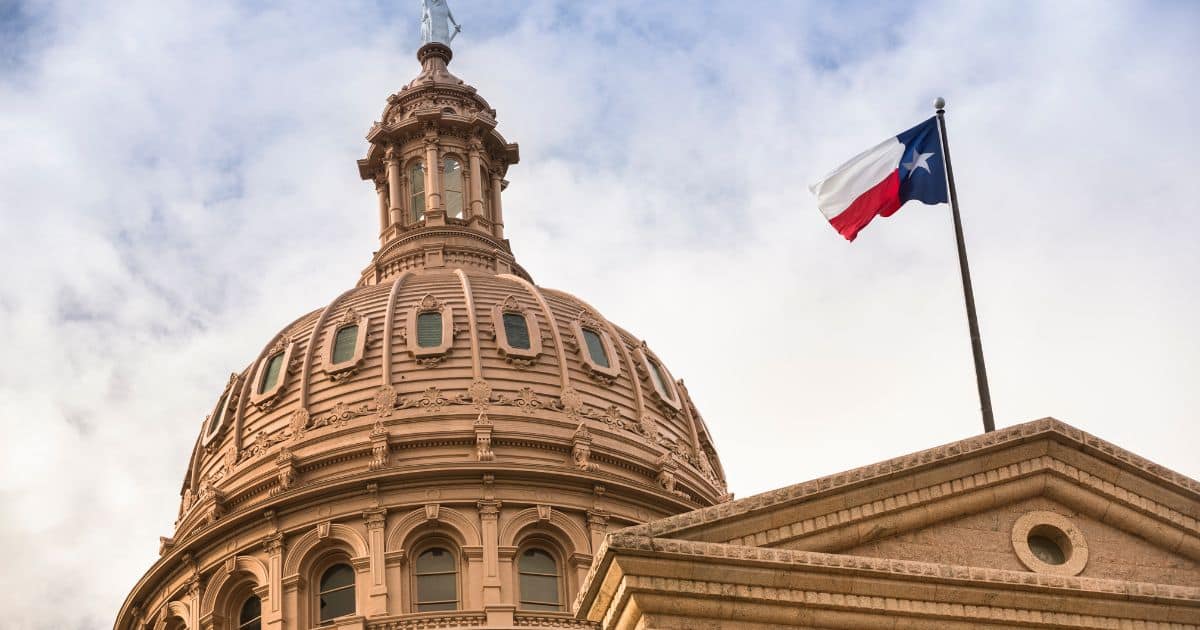Explainer
How Overconsumption Affects the Environment and Health, Explained
Climate•12 min read
Explainer
These cities are on the progressive edge of food policies that protect the climate and residents’ health.


Words by Seth Millstein
We all need food, but the ways in which we produce and consume it are contributing immensely to climate change. Around one-third of all greenhouse gas emissions come from the food industry, and animal products alone are responsible for more than half of those emissions. As our rate of meat consumption approaches unsustainable levels, several cities have taken it upon themselves to implement climate-friendly food policies, and reorient us towards a healthier planetary future.
These policies can take many different forms, but they all have the same goal: to reduce the carbon footprint of a city’s many food systems. Because animal products contribute so disproportionately to environmental destruction, many of these policies attempt to reduce meat consumption, and increase plant consumption, among a city’s residents.
This can mean expanding the accessibility of plant-based foods in a city, creating systems to track food-related emissions or simply educating the public about the health and environmental benefits of plant-based foods. There are a lot of ways for cities to promote more environmentally friendly eating. Let’s look at a few.
One of the biggest ways cities can encourage residents to eat more plant-based foods is by tweaking the menus and food offerings at public institutions, city-run events and other spaces where the local government provides food. Schools, hospitals, universities, food pantries, prisons, government offices, police departments and city council meetings all present opportunities for localities to shape public eating habits.
Although there are a few cases of cities actively restricting the availability of meat, what’s more common is for them to increase the availability, variety and affordability of plant-based foods at these places. One pointed example of this is the Better Food Foundation’s DefaultVeg initiative. The goal of this project is straightforward and simple: convince cities to make plant-based dishes the default entree at schools, hospitals and so on, while continuing to offer meat dishes to anybody who requests it.
“When the plant-based option is the default, people are more likely to pick it, because it requires effort to opt-out and pick the animal-based product,” says Laura Lee Cascada, Senior Director of Campaigns for the Better Food Foundation. “People can still pick the animal-based options if they wish, but because you’re sort of using a behavioral nudge, people are way more likely to choose a plant-based option.”
The fact that such policies don’t actually restrict anybody’s food choice, but merely encourage them to make different choices, is one part of their appeal. Another is that they generally don’t need legislative approval, as they only impact the food served at government-run institutions, not private businesses.
Cities can also encourage more sustainable eating habits by subsidizing foods with smaller environmental footprints. One way to do this is through the Supplemental Nutrition Assistance Program (SNAP), also known as the food stamps program.
For instance, in some cities, every dollar that a SNAP recipient spends on produce gets them an extra “bonus” dollar that they can spend on even more produce.
One initiative that’s aimed at getting cities to implement more of these policies is the Plant Based Treaty (PBT). The PBT is essentially a pledge that city councils can “sign,” or pass, in order to signal their support for climate-friendly food policies at the local, state, federal and global level. Although the PBT is non-binding, cities that sign it can receive training and resources from the treaty’s parent organization to help them enact these policies locally.
A similar treaty, called the Milan Urban Food Policy Pact, encourages localities to reduce per-capita meat consumption and recommends many different resources to help them do so. It’s been formally adopted by over 270 cities around the world, including many in the United States.
The Paris Agreement, sometimes referred to as the Paris Climate Accord, was a legally binding 2015 agreement between 194 countries, plus the European Union, to pursue one specific goal: making sure that global temperatures don’t rise more than 2°C above pre-industrial levels (and, ideally, staying below 1.5°C of warming). Countries that signed the agreement pledge to limit their greenhouse gas emissions in pursuit of this goal, and must report on their progress every five years.
While the Paris Agreement was an international one, over 750 U.S. cities — or, to be more precise, the mayors of over 750 U.S. cities — announced that they would become unofficial “signatories” to the agreement as well, and craft their own policies with a mind towards limiting global temperatures to the limits specified by the agreement.
The Paris Agreement does not specifically address food-related greenhouse emissions. However, many of the cities that have adopted climate-friendly food policies cite the Paris Agreement’s emissions targets as a guidepost for crafting their own food-related sustainability efforts.
The number of cities enacting sustainable food policies is growing, both in the U.S. and abroad. Here are a few of the most notable examples within the United States.

New York City has led the charge in sustainable, plant-forward food policies. In 2021, the city unveiled Food Forward NYC, a 10-year plan aimed at bringing about “a more equitable, sustainable, and healthy food system” in the Big Apple. Since then, the city has taken many actions to promote more climate-friendly food consumption.
All of the city’s public schools participate in Meatless Monday, in which they only serve vegetarian food, and Plant-Powered Friday, where only vegan meals — other than milk and cheese sandwiches — are served. On all days of the week, students must be given the option of at least one plant-based protein dish per meal, and four of the city’s public schools are fully vegetarian.
New York City has also implemented the DefaultVeg program in its hospitals, which Cascada says has both reduced the city’s carbon footprint and saved it money, since plant-based foods are generally cheaper than animal products.
“All the patient lunches and dinners are plant-based by default, and people can opt out,” Cascada says. “They’re serving over a million plant based meals every year, and over half of people are opting into them — just taking the default choice. They’re saving half a million dollars a year, and cutting their carbon footprint by 36 percent.”
Much of New York City’s progress in the field of sustainable eating is thanks to Mayor Eric Adams, a vegan who’s been vocal and passionate about the health and environmental benefits of a plant-based diet. Having a mayor who’s already on board with the cause has made it significantly easier to get the city to pass additional plant-forward policies, according to Cascada.
“We were able to just work with [Adams’] office to get the public hospitals to switch over to the DefaultVeg strategy,” Cascada says. “We didn’t actually have to pass a formal policy in that case.”
Outside of schools, New York City’s food pantry program has recently started offering fresh produce for the first time, and SNAP enrollees in the city receive a 50 percent discount when they use SNAP funds to buy fruits or vegetables.

In 2011, the Los Angeles Food Policy Council created the Good Foods Purchasing Program (GFPP), a set of food procurement policies aimed at increasing, among other things, the consumption and availability of climate-friendly foods. The next year, the GFPP was adopted by the city of Los Angeles and the Los Angeles Unified School District.
Since then, over 40 other local jurisdictions have adopted the GFPP, including Cincinnati, Chicago, Boston, San Francisco and more. In totality, over $300 million in government food purchases around the country are made under the purview of the GFPP, which also provides cities with resources and metrics with which to track its progress in reducing food-related greenhouse emissions.
That’s not all. Los Angeles also passed a version of the Green New Deal that included many climate-friendly food policies, including guaranteed nearby access to fresh produce for all low-income residents, and is the only U.S. city to have adopted the Good Food Cities Declaration, a set of food policies aimed at promoting planetary health and a reduction in meat and dairy consumption across the board.
Finally, in March, Los Angeles County passed a law requiring all departmental food purchases to be plant-based by default.

In March, Austin’s Office of Sustainability announced that it would be adopting the Better Food Foundation’s DefaultVeg plan for its own offices and events. It’s also formally partnered with Plant Based for the Planet, an initiative aimed at getting restaurants to serve more plant-based foods. As part of this collaboration, ten of the city’s restaurants have committed to permanently adding more plant-based dishes to their menus.
Through its Climate Equity Plan, the city has set the goal of reaching net-zero greenhouse gas emissions by 2040; part of this plan includes “incentiviz[ing] pro-climate, pro-health food choices,” though as of this writing, that aspect of the plan hasn’t begun yet. The city is a signatory to the Milan Urban Food Policy Pact, and two of Austin’s school districts participate in the Good Food Purchasing Program.

In 2021, Berkeley became the first city to adopt Vision 2025, a collection of policies aimed at bringing about more sustainable food systems. In doing so, the city committed to replacing 50 percent of its animal-based food purchases with plant-based alternatives, and establishing an advisory council to craft more climate-friendly food policies in the city.
In addition to these policies, Berkeley public schools offer at least one plant-based dish for every meal, and on Mondays, city events and meetings only serve vegan food. On the business side of things, restaurants may only provide reusable utensils (for on-premise eating) or compostable ones (for takeout), and any establishment selling food must have clearly-marked, color-coded bins for recycling, compost and landfill.
Given the federal government’s inaction on sustainable food policies, it’s more important than ever for local governments to take charge, Cascada says. Though they fly under many people’s radars, local governments play a huge role in shaping our day-to-day lives, and many are using their resources to encourage more sustainable, climate-friendly eating habits among their citizens.
“We see very little action on this at the national or international level,” Cascada says. “When citizens expect their governments to model sustainable behavior, it’s really important to get the local governments — who are really way more involved in citizens lives — to lead the way.”